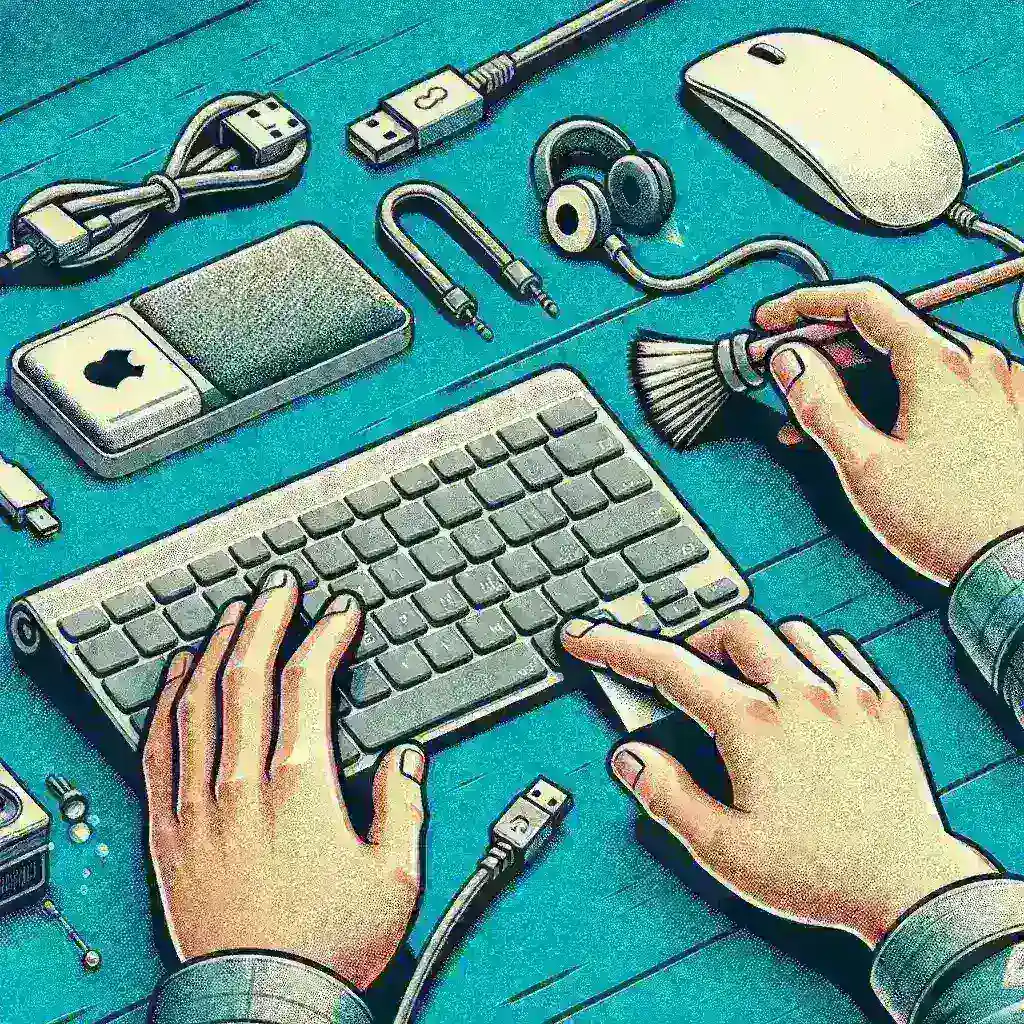Introduction
In our technology-driven world, peripherals are essential components that enhance our computing experience. Whether it’s a mouse, keyboard, printer, or external hard drive, keeping these devices clean and functioning properly is crucial. However, disconnecting and cleaning them can sometimes be a daunting task. This article will guide you through the process of safely unplugging and cleaning your peripherals while ensuring their longevity.
Understanding Peripherals and Their Importance
Peripherals are devices that connect to your computer, expanding its capabilities. They can be categorized into:
- Input Devices: These include keyboards, mice, and scanners that allow users to provide data to the computer.
- Output Devices: Monitors and printers fall into this category, displaying the results of the computer’s processes.
- Storage Devices: External hard drives and USB flash drives are used for data storage and transfer.
Maintaining these devices not only ensures optimal performance but also enhances your overall computing experience.
Why Cleaning Your Peripherals is Essential
Cleaning your peripherals is not just about aesthetics. Dust, grime, and bacteria can accumulate over time, leading to several issues:
- Performance Degradation: Dirt and dust can affect the functionality of devices like keyboards and mice.
- Health Risks: Peripherals can harbor germs, leading to health concerns, especially during flu season.
- Longevity: Regular cleaning can prolong the life of your devices, saving you money in the long run.
Step-by-Step Guide to Safely Unplugging Peripherals
Preparing to Unplug
Before you unplug your peripherals, take a moment to prepare. Here’s how:
- Save Your Work: Ensure all files are saved on your computer to avoid losing any unsaved progress.
- Shut Down the Device: For devices like printers and external hard drives, it’s best to turn them off before disconnecting.
- Identify the Connections: Familiarize yourself with the type of connection used (USB, HDMI, etc.) for easy disconnection.
Unplugging Different Types of Peripherals
Different peripherals may require different unplugging methods:
- USB Devices: Gently pull the connector from the port without using excessive force. If it’s stuck, check for any locking mechanisms.
- HDMI and Other Cables: Press the release tab (if applicable) and pull straight out to avoid damaging the port.
- Wireless Devices: Turn off the device before removing it from its USB dongle or Bluetooth connection.
Cleaning Your Peripherals: Tools and Techniques
Gathering the Right Materials
Having the right cleaning materials is crucial. Consider the following:
- Microfiber Cloth: Ideal for wiping down surfaces without scratching.
- Compressed Air: Effective for removing dust from hard-to-reach areas.
- Isopropyl Alcohol (70% or higher): Useful for disinfecting surfaces.
- Soft Brush: Helps to gently remove dust from keyboards and intricate designs.
Cleaning Procedures for Specific Peripherals
Each peripheral has its unique cleaning requirements:
Keyboard
1. Turn off and unplug the keyboard.
2. Use compressed air to blow out debris between keys.
3. Wipe the surface with a microfiber cloth dampened with isopropyl alcohol.
Mouse
1. Disconnect the mouse from the computer.
2. Clean the exterior using a microfiber cloth.
3. For optical mice, ensure the sensor is free from dust.
Monitor
1. Power off the monitor and unplug it.
2. Use a microfiber cloth to gently clean the screen, applying a suitable screen cleaner if necessary.
Printers
1. Turn off and unplug the printer.
2. Use compressed air to clear out dust from vents.
3. Clean the surface with a damp cloth while avoiding the internal components.
External Storage Devices
1. Safely eject the device from your computer.
2. Wipe the exterior with a microfiber cloth.
Best Practices for Peripheral Maintenance
To keep your peripherals in top condition, consider these maintenance tips:
- Regular Cleaning: Schedule cleaning every few months, or more frequently if you notice buildup.
- Proper Storage: Store peripherals in a dust-free environment when not in use.
- Check Connections: Regularly inspect cables and connectors for wear and tear.
Conclusion
Cleaning and unplugging your peripherals correctly can significantly enhance their performance and lifespan. By following the steps outlined in this article, you can ensure that your devices remain in optimal condition. Remember, a little maintenance goes a long way in prolonging the life of your technology.
Expert Quotes
“Regular maintenance is the key to extending the life of your peripherals. A clean environment leads to better performance and fewer issues down the road.” – Tech Expert
Future Predictions in Peripheral Maintenance
As technology evolves, we can expect more innovative cleaning solutions and tools tailored for peripherals. Advances in self-cleaning materials and smart devices that notify users when maintenance is required may become commonplace.

